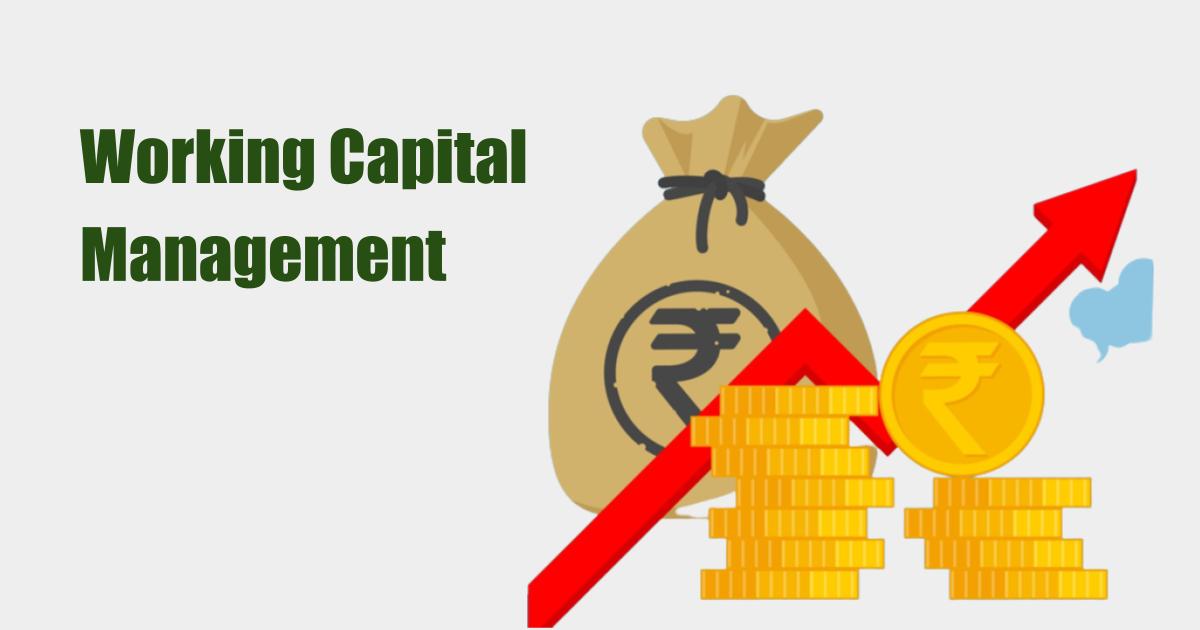
Mastering Working Capital Management: Your Guide to Business Health and Growth
In the fast-paced world of business, it’s easy to get caught up in big dreams, grand strategies, and innovative products. But beneath all that excitement lies a fundamental truth: cash is king. Without a healthy flow of cash, even the most brilliant business idea can falter. This is where Working Capital Management (WCM) steps in – it’s the financial engine that keeps your business running smoothly, ensuring you have enough cash to meet daily needs, seize opportunities, and grow sustainably.
For beginners, the term "working capital management" might sound intimidating, but it’s essentially about smart everyday money decisions. Think of it as managing your business’s checking account and short-term financial obligations. This comprehensive guide will break down working capital management into easy-to-understand concepts, show you why it’s crucial, and equip you with practical strategies to master it.
What Exactly is Working Capital?
Before we manage it, let’s understand what working capital is. In the simplest terms, working capital is the difference between your current assets and your current liabilities.
Working Capital = Current Assets – Current Liabilities
Let’s unpack these terms:
-
Current Assets: These are assets that your business expects to convert into cash, sell, or use up within one year. They represent the resources you have readily available.
- Cash and Cash Equivalents: Money in the bank, short-term investments easily converted to cash.
- Accounts Receivable: Money owed to your business by customers for goods or services already delivered (e.g., invoices yet to be paid).
- Inventory: Raw materials, work-in-progress, and finished goods that are ready for sale.
- Prepaid Expenses: Payments made for services or goods yet to be received (e.g., rent paid in advance).
-
Current Liabilities: These are debts or obligations that your business needs to pay off within one year. They represent the money you owe in the short term.
- Accounts Payable: Money your business owes to suppliers for goods or services purchased on credit (e.g., bills from vendors).
- Short-Term Loans/Notes Payable: Debts that need to be repaid within a year.
- Accrued Expenses: Expenses incurred but not yet paid (e.g., unpaid salaries, utilities).
- Current Portion of Long-Term Debt: The part of a long-term loan that is due within the next year.
Types of Working Capital:
- Positive Working Capital: When Current Assets are greater than Current Liabilities. This is generally a healthy sign, indicating you have enough short-term assets to cover short-term debts.
- Negative Working Capital: When Current Liabilities are greater than Current Assets. This can be a red flag, suggesting a potential inability to meet short-term obligations. While some highly efficient businesses (like certain retailers) might operate with negative working capital by quickly selling inventory and collecting cash before paying suppliers, for most businesses, it signals financial strain.
- Zero Working Capital: When Current Assets equal Current Liabilities. This is rare and often unsustainable, as it leaves no buffer for unexpected expenses.
Why is Working Capital Management So Important?
Effective Working Capital Management isn’t just about financial numbers; it’s about the very survival and prosperity of your business. Here’s why it’s non-negotiable:
-
Ensures Liquidity and Solvency:
- Liquidity: Having enough cash on hand to pay your immediate bills (rent, salaries, suppliers). Good WCM means you won’t run out of money for daily operations.
- Solvency: The ability to meet all your financial obligations, both short-term and long-term. WCM primarily focuses on short-term, but it directly impacts long-term solvency.
-
Boosts Profitability:
- By managing inventory efficiently, you reduce storage costs and obsolescence.
- By collecting receivables faster, you can reinvest cash sooner, potentially earning more.
- By optimizing payables, you can take advantage of supplier discounts or better manage your cash outflow.
-
Facilitates Growth and Expansion:
- A healthy working capital position provides the financial flexibility to invest in new equipment, launch new products, or expand into new markets without immediate reliance on external financing.
- Lenders and investors look favorably on businesses with strong working capital, making it easier to secure funding when needed.
-
Mitigates Financial Risk:
- It creates a buffer against unexpected events like economic downturns, supply chain disruptions, or sudden increases in costs.
- Reduces the risk of defaulting on payments, which can damage your credit rating and reputation.
-
Improves Operational Efficiency:
- Forces businesses to analyze their processes related to purchasing, production, sales, and collections, leading to more streamlined and efficient operations.
Consequences of Poor Working Capital Management:
- Cash Crunch: Not enough money to pay bills, leading to missed payments, late fees, and strained supplier relationships.
- Missed Opportunities: Inability to invest in growth initiatives or take advantage of bulk purchase discounts.
- Reduced Profitability: High inventory holding costs, bad debts, or inability to take early payment discounts from suppliers.
- Damaged Reputation: Late payments can hurt your credit score and make it difficult to secure future financing or attract new suppliers.
- Business Failure: Ultimately, persistent poor working capital management is a leading cause of business bankruptcy.
Key Components of Working Capital Management
Working Capital Management involves actively overseeing and optimizing each element of your current assets and current liabilities. Let’s dive into the core components:
1. Cash Management
Why it matters: Cash is the most liquid asset and the fuel for your business. Effective cash management ensures you always have enough to meet your obligations without holding onto too much idle cash.
Strategies:
- Cash Flow Forecasting: Predict your incoming and outgoing cash over a specific period (weekly, monthly, quarterly). This helps anticipate shortages or surpluses.
- Accelerate Cash Inflows:
- Prompt Invoicing: Send invoices immediately after delivery of goods/services.
- Efficient Collections: Follow up on overdue invoices politely but firmly. Offer early payment discounts (e.g., "2/10, net 30" – 2% discount if paid within 10 days, otherwise full amount due in 30).
- Accept Diverse Payment Methods: Make it easy for customers to pay (credit cards, online transfers, mobile payments).
- Optimize Cash Outflows:
- Negotiate Payment Terms: Seek longer payment terms with suppliers without incurring penalties.
- Time Payments Strategically: Pay bills on their due date, not before, to keep cash longer.
- Centralize Cash: If you have multiple bank accounts, consolidate them to get a clearer picture and better control.
- Manage Surplus Cash: Invest excess cash in short-term, low-risk instruments (e.g., money market funds) to earn a return while maintaining liquidity.
2. Inventory Management
Why it matters: Inventory ties up a significant amount of cash. Too much inventory leads to high storage costs, obsolescence, and potential damage. Too little inventory can lead to lost sales and unhappy customers.
Strategies:
- Accurate Demand Forecasting: Use historical data and market trends to predict customer demand, minimizing overstocking or understocking.
- Just-In-Time (JIT) Inventory: A strategy where materials and products are received only when they are needed for production or sale, reducing holding costs. This requires strong supplier relationships.
- Economic Order Quantity (EOQ): A formula that helps determine the ideal order quantity for inventory to minimize total inventory costs (holding costs + ordering costs).
- ABC Analysis: Categorize your inventory based on value or importance. "A" items are high-value, "B" are medium, "C" are low. Focus more management attention on "A" items.
- Minimize Obsolescence: Regularly review inventory for slow-moving or outdated items and consider clearance sales or write-offs to free up space and cash.
- Improve Warehouse Efficiency: Organize your warehouse to reduce handling costs and spoilage.
3. Accounts Receivable Management
Why it matters: Accounts Receivable (AR) represents money owed to you. If customers pay late, your cash flow suffers. Efficient AR management ensures you get paid on time.
Strategies:
- Robust Credit Policy: Establish clear guidelines for extending credit to customers. Assess their creditworthiness before offering terms.
- Clear Invoicing: Ensure invoices are accurate, easy to understand, and include all necessary information (payment terms, due dates, contact info).
- Consistent Follow-up: Implement a systematic process for reminding customers of upcoming due dates and following up on overdue invoices. This can be automated.
- Offer Incentives: As mentioned in cash management, early payment discounts can encourage faster payment.
- Customer Relationship Management: Maintain good relationships. Sometimes a simple friendly reminder is all that’s needed.
- Consider Factoring or Discounting: For immediate cash, you can sell your receivables to a third party (a "factor") at a discount. This is expensive but provides instant liquidity.
4. Accounts Payable Management
Why it matters: Accounts Payable (AP) represents the money you owe to suppliers. Managing AP effectively can help you control cash outflow and build strong supplier relationships.
Strategies:
- Negotiate Favorable Payment Terms: Aim for longer payment terms (e.g., 60 or 90 days) without incurring penalties, giving you more time to use your cash.
- Take Advantage of Discounts: If a supplier offers a discount for early payment (e.g., 2/10, net 30), evaluate if the savings outweigh the benefit of holding onto cash longer. Often, these discounts are very attractive.
- Centralize Payments: Streamline your payment process to avoid duplicate payments and improve tracking.
- Build Strong Supplier Relationships: Good relationships can lead to more flexible terms, better pricing, and priority service.
- Avoid Late Payments: While you want to hold cash as long as possible, paying late incurs fees and damages your reputation. Pay on time, or just before the due date.
Strategies for Effective Overall Working Capital Management
Beyond managing individual components, here are overarching strategies to optimize your working capital:
-
Focus on the Cash Conversion Cycle (CCC):
- The CCC measures the number of days it takes for your investment in inventory and receivables to be converted back into cash. A shorter CCC means your business is more efficient at generating cash.
- CCC = Days Inventory Outstanding (DIO) + Days Sales Outstanding (DSO) – Days Payables Outstanding (DPO)
- Your goal is to shorten DIO and DSO (get rid of inventory faster, collect receivables faster) and potentially lengthen DPO (pay suppliers later, within terms).
-
Implement Strong Forecasting and Budgeting:
- Accurate financial forecasting (sales, expenses, cash flow) is the bedrock of good WCM. It allows you to anticipate needs and make proactive decisions.
- Develop detailed budgets for all aspects of your operations.
-
Leverage Technology and Automation:
- Accounting software (QuickBooks, Xero, etc.) automates invoicing, expense tracking, and reconciliation.
- Inventory management systems track stock levels and automate reordering.
- Accounts payable automation streamlines invoice processing and payments.
- Customer Relationship Management (CRM) systems can help manage sales pipelines and improve collection efforts.
-
Regular Monitoring and Analysis:
- Don’t just set it and forget it. Regularly review your working capital ratios (e.g., current ratio, quick ratio) and cash flow statements.
- Identify trends, potential problems, and areas for improvement.
- Adjust your strategies as market conditions or business needs change.
-
Maintain a Healthy Balance:
- The key is balance. While you want to minimize capital tied up in assets, you also need enough inventory to meet demand and offer reasonable credit terms to attract customers.
- Don’t cut so deep that it negatively impacts sales or supplier relationships.
Common Working Capital Management Mistakes to Avoid
- Ignoring Cash Flow: Focusing solely on profits without understanding the actual movement of cash in and out of the business.
- Poor Inventory Control: Either holding too much (high costs, obsolescence) or too little (lost sales, production delays).
- Lenient Credit Policies: Granting credit to customers without proper vetting, leading to high bad debt rates and slow collections.
- Neglecting Supplier Relationships: Paying late or not negotiating terms can lead to higher costs or unreliable supply.
- Lack of Planning: Not forecasting cash needs or having a strategy for managing peaks and troughs in cash flow.
- Failing to Monitor Metrics: Not regularly tracking key working capital ratios and indicators.
Who Benefits from Effective Working Capital Management?
Every business!
- Small Businesses & Startups: Crucial for survival and growth, as cash reserves are often limited.
- Medium-Sized Businesses: Enables scalable growth and competitive advantage.
- Large Corporations: Essential for optimizing vast operations and maximizing shareholder value.
Conclusion
Working Capital Management is not a one-time fix; it’s an ongoing, dynamic process that requires continuous attention and adjustment. By understanding its components, implementing smart strategies, and consistently monitoring your financial health, you can transform your business’s financial engine from sputtering to soaring.
Mastering Working Capital Management ensures you have the necessary liquidity to meet daily demands, the profitability to thrive, and the financial flexibility to seize opportunities. It’s the cornerstone of sustainable business growth and the ultimate pathway to long-term success. Start by analyzing your current assets and liabilities today, and take the first step towards a healthier, more prosperous future for your business.



Post Comment